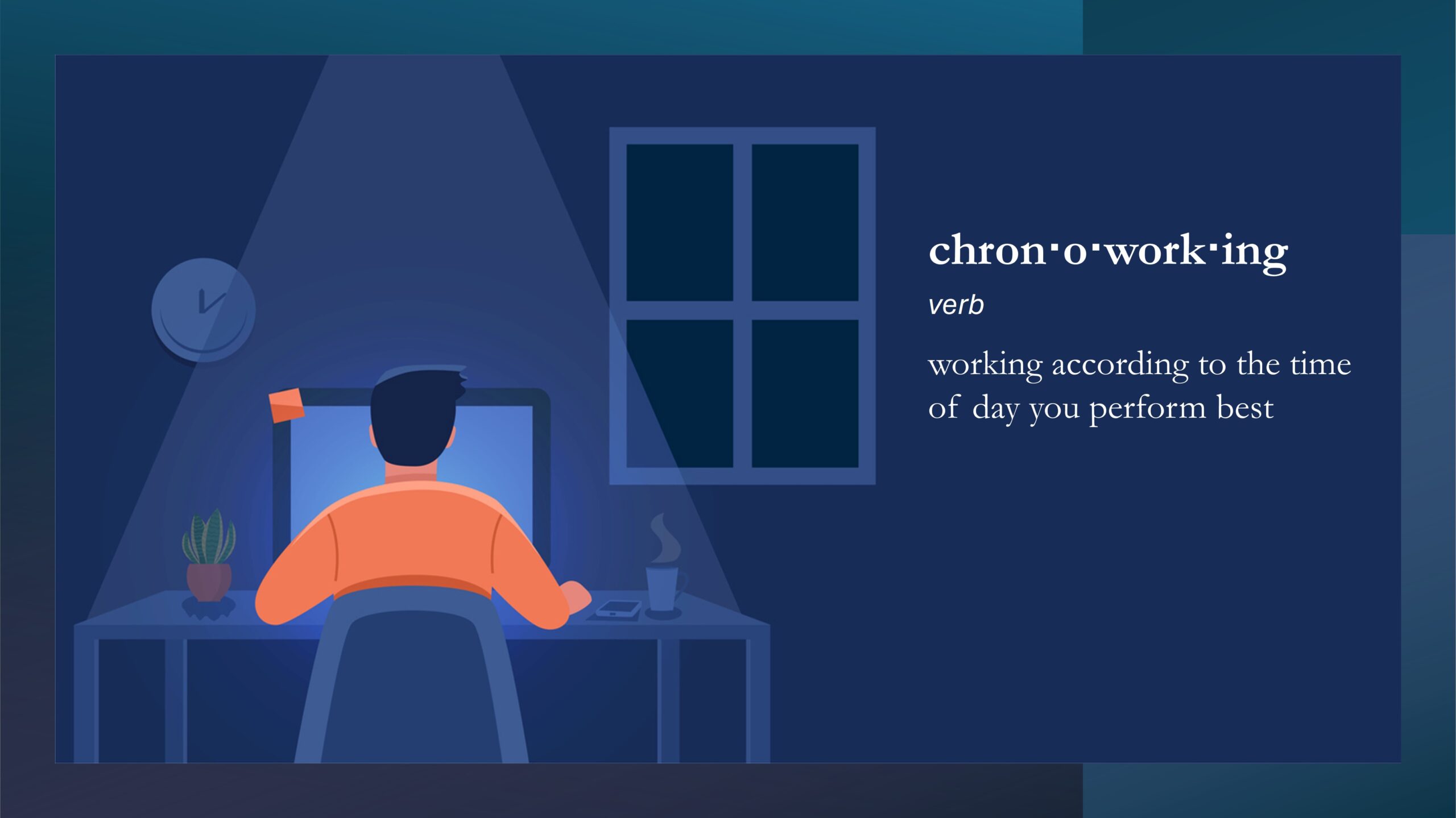
Our advice: consider welcoming back this old new trend.
In just the last week, I’ve read several articles heralding the arrival of a new trend among office workers: Chronoworking. The term refers to the practice of adjusting your work schedule to align with those times of the day you’re most productive.
The only problem with this new trend? It’s not new.
In ages past, individual workers naturally gravitated toward work schedules that were most productive. It was only as we entered the Industrial Revolution (with synchronized looms and mills) followed by the Information Age (with its cube farm/corner office dichotomy) that rigid scheduling became the norm.
But even then, there were notable exceptions. Thomas Edison famously took up to three naps a day; he found that the breaks in work allowed for new thoughts or solutions to a problem, and he had a pen nearby to capture thoughts upon waking.
Chronoworking: the practice of adjusting your work schedule to align with the times you’re most productive.
Growing up, I often watched my mom unpack files and manuals on government procurement from her bag and set them on our kitchen table to work on; she tended to do her best work in the evening hours. (With three boys at home, I can’t imagine how our house was conducive to work, but she found a way).
When I worked in an office, I would arrive an hour or more before the workday began; I found that I could accomplish more focused work in those first two hours of deep concentration than I could in the next nine hours. Working from home, it’s not unusual for me to tackle one or two tasks between 4:30 and 5:30 am, go to the gym, and then return home to “begin” my workday.
Chronoworking is at a new point of inflection. Though working outside traditional office hours has been a “trend” for as long as people could carry home a briefcase, it’s gotten a boost from recent world events and innovations. VPN connections and cloud platforms make it easier. Covid made it normal; the abrupt work-from-home transition necessitated some work hour flexibility that people aren’t keen to relinquish during the return-to-office wave.
It’s now so ubiquitous that we feel we can say it out loud: We don’t all work well at the same times. That’s okay.
So, if you are a leader in your organization and you see this “trend” on the horizon, what do you do?
- Think about your own work patterns. I struggle to think of one executive or entrepreneur who does not (instinctively or intentionally) structure their work patterns to leverage their most productive times of the day. In fact, most leaders get to where they are in large part because they optimize their work patterns. If you have benefited from work flexibility, shouldn’t your employees?
- Foster trust and ownership. You hired great people, right? So let them be great. Give them some choice in the way they deliver on their mission. Working at the right times doesn’t just make people more productive, offering choices makes them feel in control and trusted, which is motivating. If you really need team members to hold down the pneumatic lift on an office chair between 8 AM and 5 PM to feel they’re productive, are they really the best people for your organization anyway?
We don’t all work well at the same times. That’s okay.
- Communicate clearly and intentionally. Employees using flexible work schedules must have stated expectations and accountability. And they need to understand the purposes and benefits of work flexibility. Be intentional in the balance between flexibility and cohesion. For example, create common times when the team comes together, virtually or physically. This sends an important message: While we all work differently, we are one team working toward a goal together.
Allowing chronoworking is a change for many teams, and we know that change is hard. We also know that the most successful organizations embrace change.




